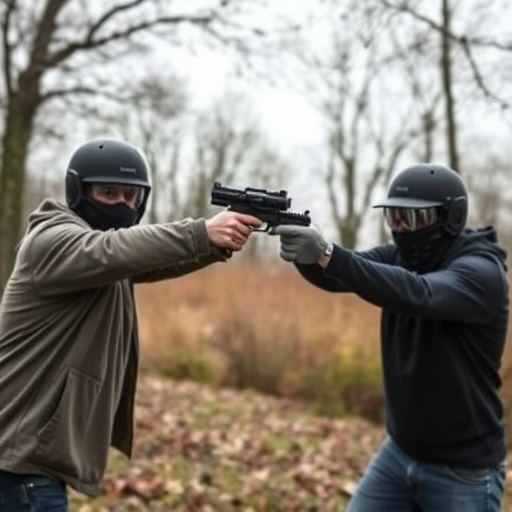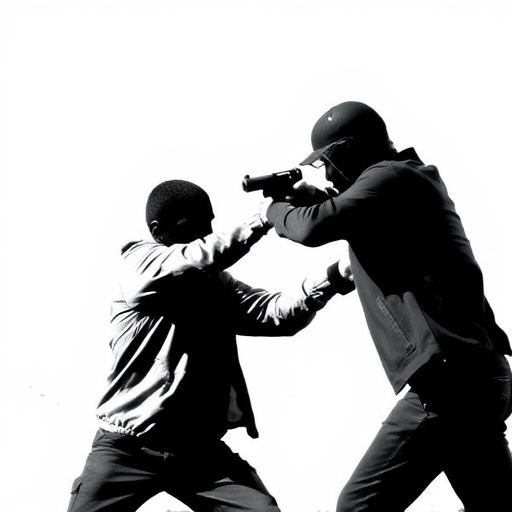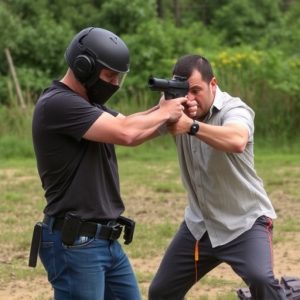Taser Paralysis Duration: Factors and Concealed Stun Gun Flashlight Combos Mitigation
Taser deployment durations vary based on device model, charge level, target's physicals, proxim…….
Taser deployment durations vary based on device model, charge level, target's physicals, proximity, and environmental conditions, from seconds to minutes. Concealed stun gun flashlight combos, with their multi-purpose functionality, offer strategic self-defense in night or low-light scenarios, combining disorientation via flashlights with powerful non-lethal force from stun guns. Users and authorities must understand these varying durations to ensure responsible usage and minimize risks associated with electric shock devices.
“Discover the surprising impact of taser deployment and its effect on paralysis duration. This comprehensive article delves into the intricate factors influencing how long individuals remain paralyzed after a stun gun activation. From physiological responses to environmental conditions, we explore the complexities. Furthermore, learn about the emerging role of concealed stun gun flashlight combos in potentially mitigating paralysis time, offering a new perspective on self-defense tools. Understanding these dynamics is crucial for both law enforcement and civilians alike.”
- Understanding the Impact of Taser Deployment: A Comprehensive Overview
- Factors Influencing Paralysis Duration: Unraveling the Complexities
- The Role of Concealed Stun Gun Flashlight Combos in Duration Mitigation
Understanding the Impact of Taser Deployment: A Comprehensive Overview

Taser deployment, especially in law enforcement scenarios, has sparked debates and discussions regarding its potential impact on individuals, particularly focusing on paralysis duration. When officers employ these devices, the effects can vary greatly depending on factors like the model used, the charge level, and the target’s physical attributes. It’s crucial to understand that a concealed stun gun flashlight combo, while designed for self-defense, can lead to significant physiological responses when activated.
The concept of paralysis duration after Taser deployment refers to the length of time an individual remains immobilized due to the device’s electric current. Studies indicate that this period can range from a few seconds to several minutes, with factors like muscle mass and body fat percentage influencing the extent of immobilization. Given the growing prevalence of concealed stun gun flashlight combos as personal defense mechanisms, comprehending these effects is vital for both users and authorities, ensuring responsible usage and minimizing potential risks associated with electric shock devices.
Factors Influencing Paralysis Duration: Unraveling the Complexities

The duration of paralysis induced by a taser deployment is influenced by several intricate factors, each playing a pivotal role in understanding the aftermath of its use. One key aspect is the specific model and design of the stun device, such as a concealed stun gun flashlight combo. These weapons vary in their electrical output, with higher voltage potentially leading to longer periods of immobilization. The distance between the officer and the target also matters; closer ranges generally result in shorter times due to the more concentrated electric current.
Additionally, individual factors like body type, muscle mass, and previous fitness levels can impact the duration of paralysis. Fatigue or pre-existing medical conditions might make an individual less susceptible to the effects of a taser, while others may experience prolonged immobility. Environmental conditions, such as temperature and humidity, are often overlooked but can significantly affect the body’s response to electrical shocks, potentially prolonging or reducing the period of paralysis.
The Role of Concealed Stun Gun Flashlight Combos in Duration Mitigation

Paralysis caused by taser deployment can vary greatly in duration, with some individuals experiencing symptoms for several minutes or even longer. In such situations, concealed stun gun flashlight combos emerge as a strategic tool to mitigate the overall effect of the incident. These multi-purpose devices combine the power of a stun gun with the functionality of a high-intensity flashlight, offering both safety and tactical advantages.
The integrated design allows users to deter potential threats and provide illumination during night-time encounters or in low-light environments. By using the flashlights feature, individuals can temporarily disorient suspects, reducing their ability to act aggressively while the stun gun component provides a powerful non-lethal force for self-defense. This dual functionality not only extends the duration of paralysis but also enhances overall safety during stressful situations, making concealed stun gun flashlight combos a popular choice among those prioritizing personal security.
In conclusion, understanding the duration of paralysis resulting from Taser deployment is paramount for both law enforcement and self-defense users. By examining factors like subject physiology and environmental conditions, we can gain insights into minimizing these effects. Additionally, the integration of concealed stun gun flashlight combos offers a promising strategy to mitigate paralysis durations, enhancing safety and effectiveness in various scenarios.


